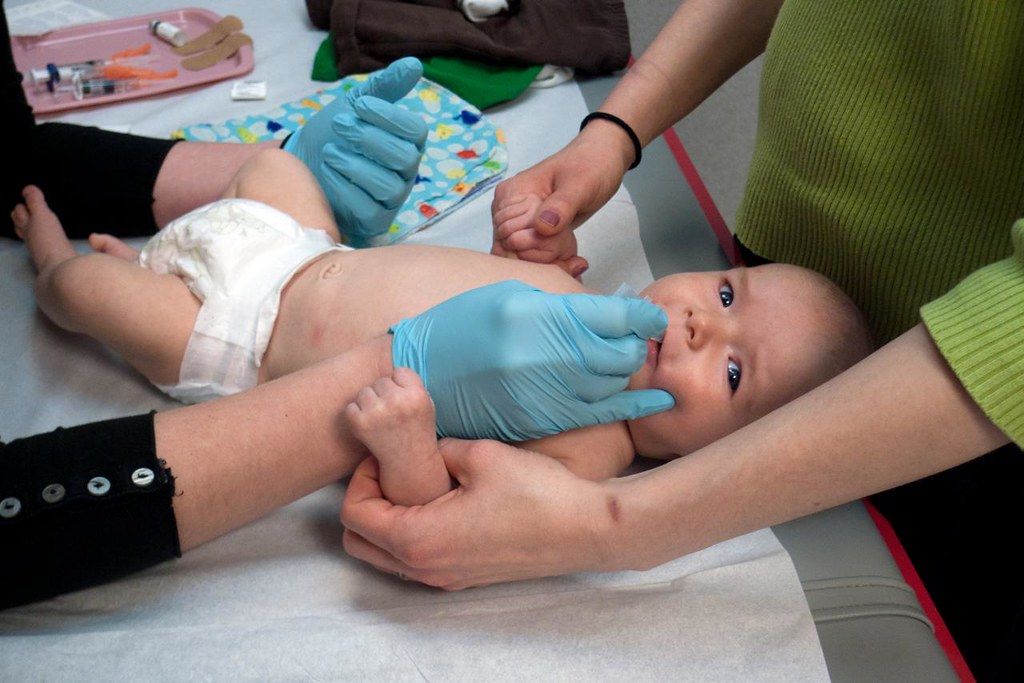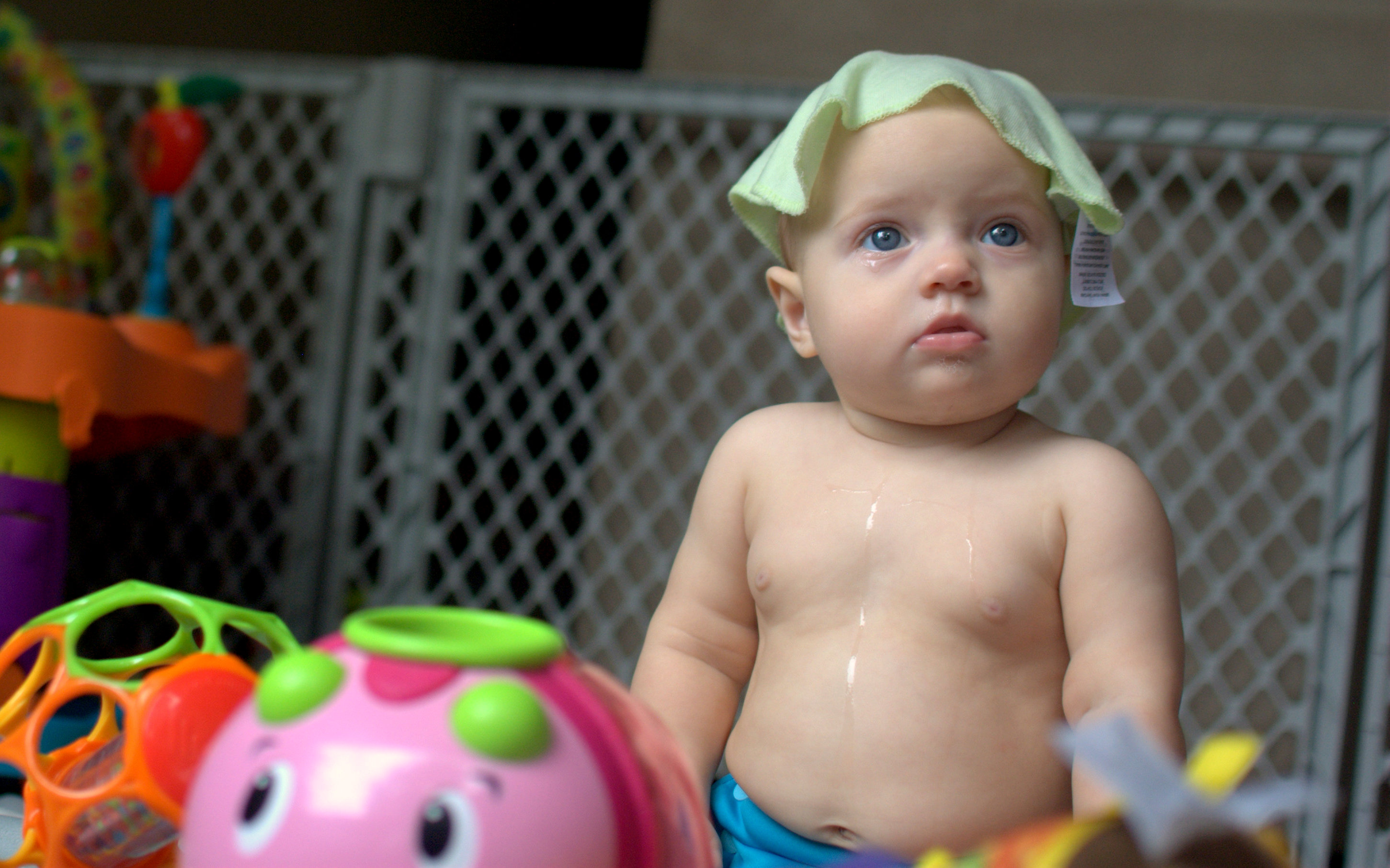In continuation with our past article, “Jatakarma – Concise Ancient Immunization Activity” It is amazing to know, in terms of human growth, how our ancients were far advanced than today’s world. In those line, there has been a lot of discussion and enquirers in our whatsapp group to know if there is any chart, like an allopathic vaccination chart, that is more holistic in nature and does only one thing, good without side effects!
We went back our books, spoke various ancient healers and Ayurvedic doctors. Here is what we found, list of immunization from Day 1 to 12 Years.
- Day One
- Day 15 to 30
- 1st Month
- 3rd Month
- 6th Month
- 1st Year
- 3rd Year
- 5th Year
- 8th Year
- 10th Year
- 12th Year
Jaatamatra / One day old child
Vacha is grinded in the juice of Tripadika and three drop of this mixture is instilled over the centre of the head. This procedure will maintain the digestive power correctly, the doshas will maintain correct balance, and the affliction with Balagraha will be prevented.
Pakshateeta / 15 days to 1 month
The root, bark, leaf, flower and fruit of Bilva are taken together and powdered well. This powder is added with the juice of Dhatri and given internally.
Athipakshateeta / Completed 1 month
The drugs such as Musta, Hingu and Vilanga are powdered and added with ghee medicated with juice of Trayanti / Brahmi is given internally.
Thraimasika / Completed 3 months
The drugs such as Vyosha, and powder of Sariba is added with butter and given internally.
Shanmasika / Completed 6 months
The powder of Musalikanda and Trikatu are mixed together and added with honey is given internally.
Ekabdha / 1 year old child
The child of one year old should be administered with different preparations in each month for first 7days as:
- 1 year 1 month.-Powder of drugs such as Dhatri, Musta and Vyosha added with honey is given internally at 1 year 1 month
- 1 year 2 month.Powder of drugs such as Dhatri, Musta and Vyosha added with butter is given internally at 1 year 2 month
- 1 year 3 month. Powder of drugs such as Dhatri, Musta and Vyosha added with hot water is given internally at 1 year 3 month
- 1 year 4 month. Powder of drugs such as Dhatri, Musta and yosha added with honey is given internally at 1 year 4 month
- 1 year 5 month. The drugs of Panchakola (Pippali, Pippali mula, Chavya, Chitraka and Nagara) is powdered and added with ghee is given internally at 1 year 5 month
- 1 year 6 month. Powder of Jeeraka and Krishna is added with honey and given internally at 1 year 6 month
- 1 year 7 month. The drugs such as Dadima and Vyosha added with Dadhi masthu is administered internally at 1 year 7 month
- 1 year 8 month. The ghee medicated with the drugs such as Grandhika mula and Kalinga/Kutaja is administered internally at 1 year 8 month
- 1 year 9 month. The drugs such as Vella/Vidanga and Krishna added with honey is administered internally at 1 year 9 month
- 1 year 10 month. The drugs such as Jeeraka and Vyosha added with sugar are administered internally at 1 year 10 month
- 1 year 11 month. The drugs such as Jeeraka and Vyosha added with cow‘s milk are administered internally at 1 year 11 month.
The sugar and Jeeraka added with cow‘s milk is given internally at 1 year 12 month.
Thryabdha / 3 year old child
The child of three year old should be administered with different preparations in each month as
- The drugs such as Guduchi, Pippali and Vacha are powdered and added with ghee and sugar is given internally at 3 year 1 month
- The drugs such as Vyosha, Yasti, Vacha, Saindhava and Abhaya are powdered together and added with sugar and ghee is administered internally at 3 year 2 month
- The drugs such as Vella, Musta, Ela, Vacha, Nagara and Pippali are powdered and given with sugar and ghee is administered internally at 3 year 3 month. The drugs such as Sariba, Vyosha, Vacha, Jeeraka and Kaisiki are powdered and added with sugar and ghee is administered internally at 3 year 4 month
- The drugs such as Dadima, Ambhoda, Vacha, Dhanyaka and Magadhi/Pippali are powdered together and given with sugar and ghee at 3 year 5 month
- The drugs such as Vrusciva, Bhunimba, Vacha and Ksheera taru twak are powdered well and mixed with sugar and ghee is administered internally at3 year 6 month
- The drugs such as Supyaparni, Abda, Vira, Rudhi, Chapala and Vacha are powdered well and mixed with sugar and ghee is given at 3 year 7 month
- The drugs such as Drona pushpa, Abda, Vacha and Dwija taru twak are powdered well and mixed with sugar and ghee is administered internally at 3 year 8 month
- The drugs such as Trayamana/Brahmi, Abda, Vacha, Kutaja and Magadhi are powdered well and mixed with sugar and ghee is administered internally at 3 year 9 month
- The drugs such as Malati pushpa, Vacha, Jeeraka and Kaisiki are powdered and added with sugar and ghee and given at 3 year 10 month
- The drugs such as Samipatra, Jeeraka, Agni, Vach.a and Kana are powdered and added with sugar and ghee and given at 3 year 11 month
- The drugs such as Vella, Talisapatra, Agni, Pashugandha, Abhaya and Vacha are powdered and added with sugar and ghee and given at 3 year 12 month
Panchayana / 5 year old child
The child of five year old is given with medicaments said for Thryabdha/3 year old child with Pushkaramula instead of Vacha.
Ashtabdha / 8 year old child
The child of eight year old is given with medicaments said for Thryabdha/3 year old child, added with root of Sankhapushpa instead of Vacha and the medium for mixing the compound is ghee and honey instead of sugar and ghee.
Dasabdha / 10 year old child
After the tenth year, the child is given with proper medicated ghee monthly for seven days such as:
- Abhayadi Ghrita: Ghee medicated with the juice of Brahmi added with the kalka prepared with the drugs such as Abhaya,Vyosha, Saindhava, Vacha and Talisapatra, is given at 10 year 1 month
- Vidangadi Ghrita: Ghee medicated with the kalka prepared with the drugs such as Vilanga, Amalaka, Vyosha, Patha, Dadima and Dipyaka added with the juice extracted from Krishnamunda, is administered at 10 year 2 month
- Jeerakadi Ghrita: Ghee medicated with the kalka prepared with the drugs such as Jeeraka, Vyosha, Saindhava, Vacha, Jalada and Pushkara along with the juice of Vetasamla, is administered at 10 year 3 month
- Jeevaniyadi Ghrita: Ghee medicated with the drugs in the group called Jeevaniya gana, Ambhoda, Jayanthi mula, Chitraka and Granthi added with goat‘s milk is administered at 10 year 4 month
- Drakshadi Ghrita: Ghee medicated with the kalka prepared with the drugs such as Draksha, Vruschiva, Patha, Abda, Habusha mula, Katphala and Dadima along with goat‘s milk is administered at 10 year 5 month
- Saribadi Ghrita: Ghee medicated with the kalka prepared with the drugs such as Sariba, Jalada, Ushira, Trikatu, Surahwaya and Jeeraka added with goat‘s milk is administered at 10 year 6 month
- Nagaradi Ghrita: Ghee medicated with the kalka prepared with the drugs such as Nagara, Amalaka, Anantha, Vilanga,Indrayava, Ambuda, and the root, bark, leaves, flower and fruit of Bilva added with water is administered at 10 year 7 month
- Pippalyadi Ghrita: Ghee medicated with the kalka prepared with the drugs such as Pipppali, Indrayava, Draksha, Bruhati, Amshumathi dwaya, Tikta, aikundapushpa, Ambu, Nalada/Ushira, Alarka/Arka, Dipyaka, Dadima, Ambhoda, Patha, Ugra/Vacha, Sigru, Hingu, Punarnava, Bilva mula, Shami valka, Malati mukula, Utpala, Vilanga and Amalaka added with the medicinal fluid called Masthu is added with sugar and Jeeraka is administered at 10 year 8 month
- Bilvadi Ghrita: Ghee medicated with the decotion prepared with the drugs such as Bilva, Ajamoda, Nirgundi, Chapala mula, Toyada and Dadima added with the kalka prepared with the drugs such as Vyosha, Ela, Agni and Vilanga along with cow‘s milk is beneficial to prevent diseases. The drugs such as Patha, Vaikunda and Musta along with the medicinal fluid called Masthu can be used to prepare the medicated ghee. The same medicaments along with the decotion mentioned above can be used to medicate the ghee is also beneficial at 10 year 9 month
- Trayamanadi Ghrita: Ghee medicated with the decotion prepared with the drugs such as Trayamana, Kalinga, Abda and Chapala mula added with the kalka prepared with the drugs such as Ativisha,Musta, Bhunimba and Kutaja is beneficial to prevent diseases. Ghee medicated with the kalka of the drugs such as Vyosha, Agni, Dadima and Jeeraka added with goat‘s milk is also beneficial to use at 10 year 10 month
- Dadimadi Ghrita: Ghee medicated with the kalka prepared with the drugs such as Dadima, Triphala, Vella, Magadhi mula and Chitraka along with the juice of Jeevanthi and Masthu is advised to administer at 10 year 11 month
- Pathakutajadi Ghrita: Ghee medicated with the decotion prepared with the drugs such as Patha, Kutaja, Bhunimba, Varshabhu / Vruschiva and Dhanyaka along with the kalka prepared with the drugs such as Vella, Palasa twak, Nisha dwaya, Punarnava, Vyosha, Dipyaka, Ananta and Madhuka / Yastimadhu is advised to administer added with honey at 10 year 12 month
Dwasasabdha / 12 year old child
At 12 year 1 month, the drugs such as Ananta and Vacha along with sugar and honey is administered internally while from 12 year 2 month onward, Instead of Ananta, the drugs such as Brahmi, Munda, Shami valka, Bhrunga, Amalaka, Magadhi, Vishala, Vajra valli, Indurekha, Bhunimba and Gopica are administered.



 Immunity is one of the main benefits of swarna prashana. Many parents ask us or assume a lot about immunity; so, we decided to give a detailed version of Immunity from an ayurvedic point of view.
Immunity is one of the main benefits of swarna prashana. Many parents ask us or assume a lot about immunity; so, we decided to give a detailed version of Immunity from an ayurvedic point of view.






